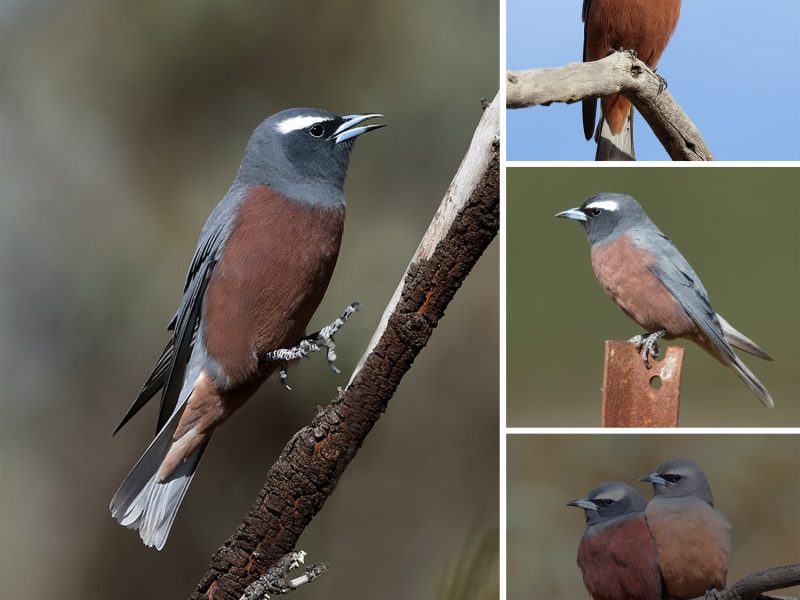Blindingly gorgeous in his striking red and black suit is a bird who looks his best only at certain times of the year!
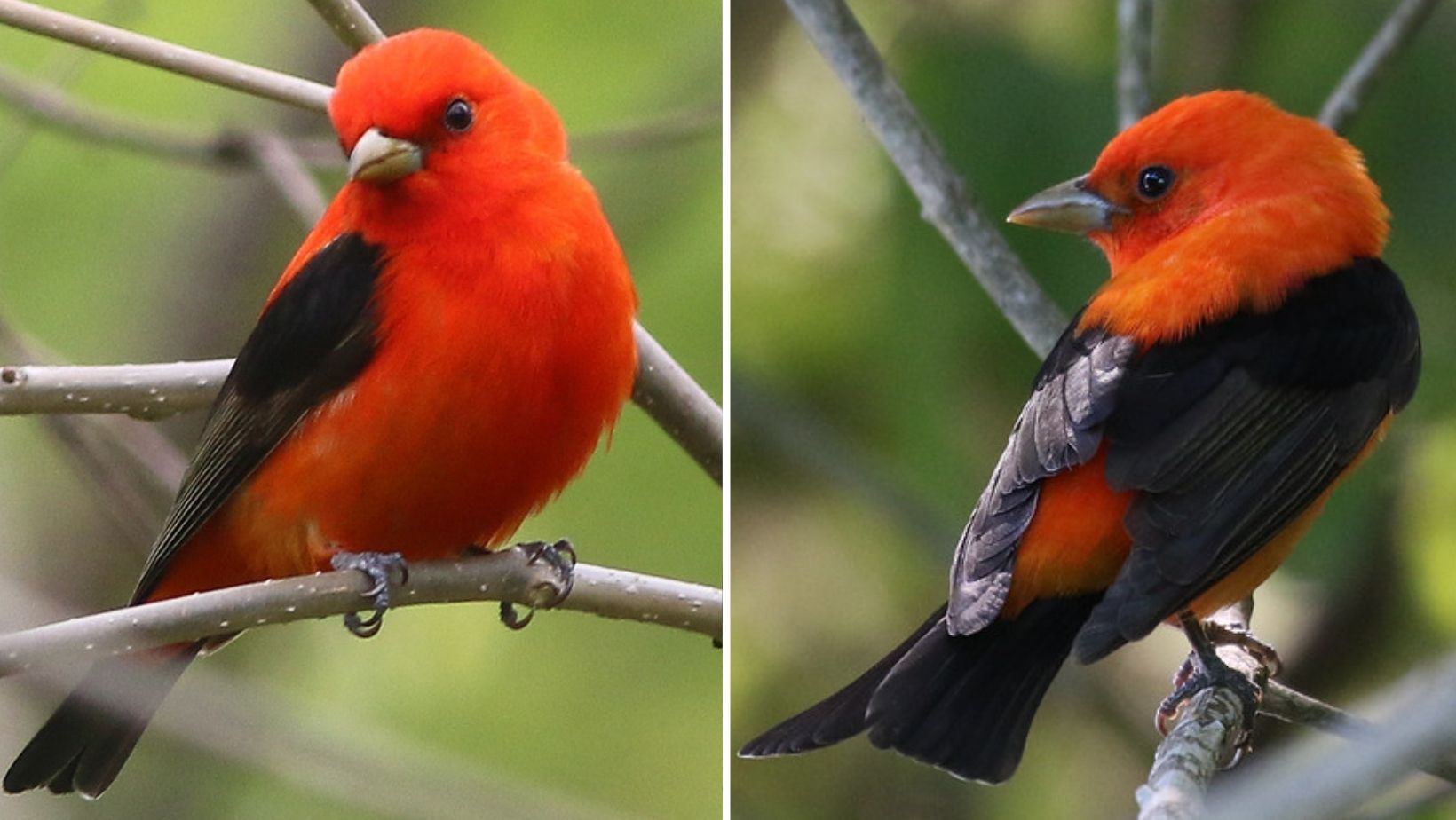
Meet the Scarlet tanager
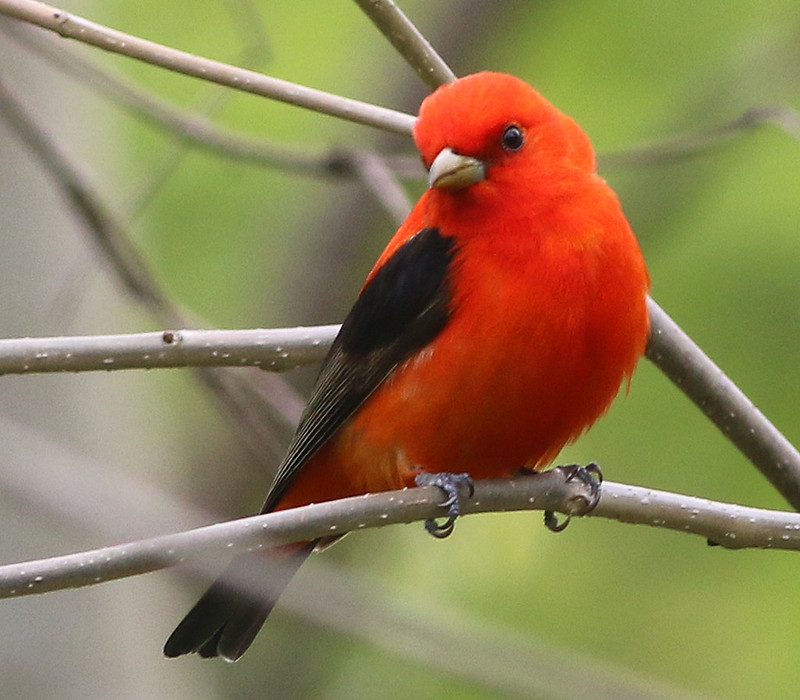
The scarlet tanager (Piranga olivacea), is a medium-sized American songbird. Until recently, it had been placed in the tanager family (Thraupidae), but it and other members of its genus are now classified as belonging to the cardinal family (Cardinalidae). About 7 inches, adult breeding males a covered in brilliant scarlet plumage, which is beautifully contrasted by black wings and a black tail.
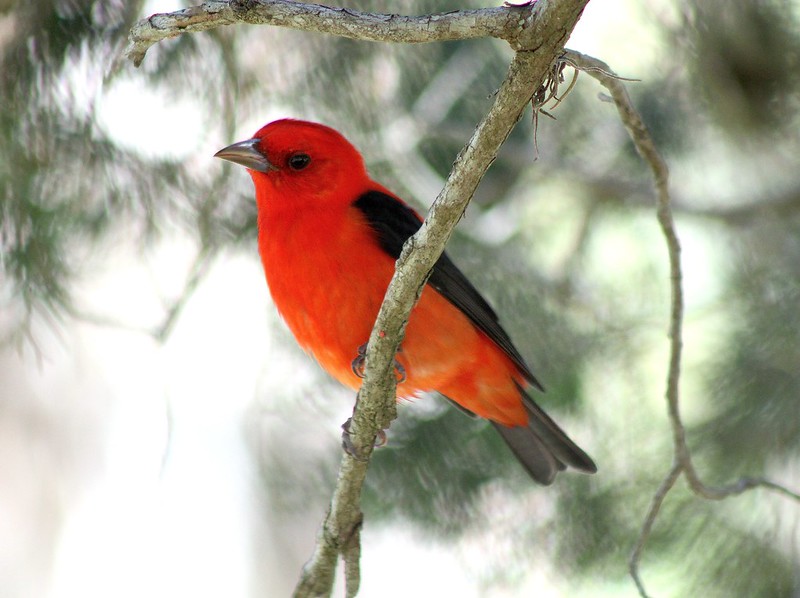
By the time fall comes around he changes his scarlet plumage for a more drab suit of olive-yellow.
The female is more of a dull olive color, while juvenile males briefly show a more complex, stunning, variegated plumage, somewhere between that of adult males and adult females.
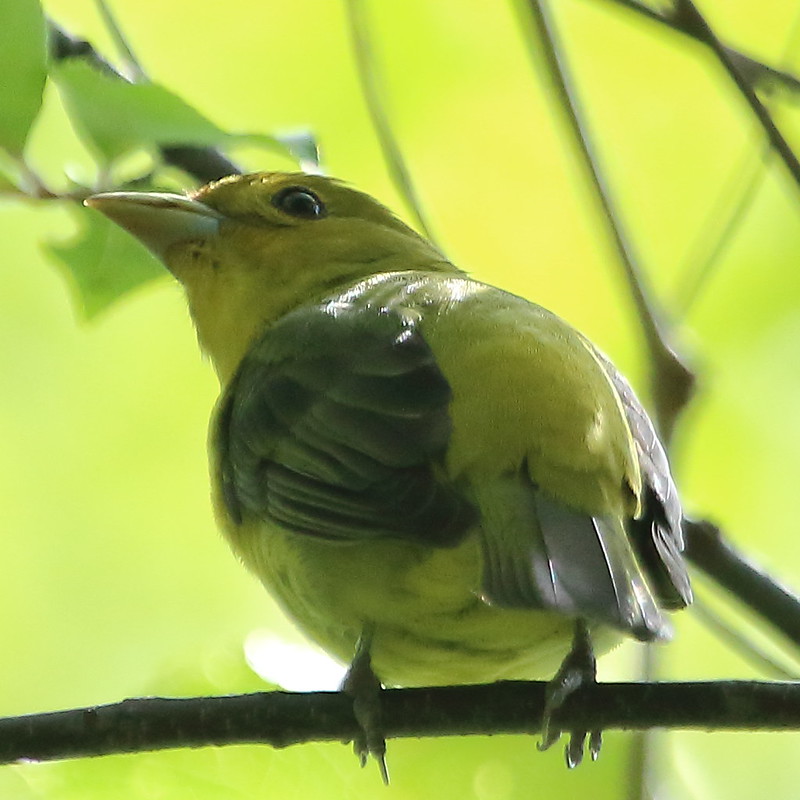
These birds winter in South America, arriving in the United States through April, and moving into the northern U.S. and Canada by early to mid-May. By far their largest range is in the United States itself.

Scarlet tanagers prefer mature Nearctic woodlands during the breeding season, with areas of tall shade trees, even in suburban areas. Oak being their favorite, they will also occupy mixed woods, coppice, and orchards.
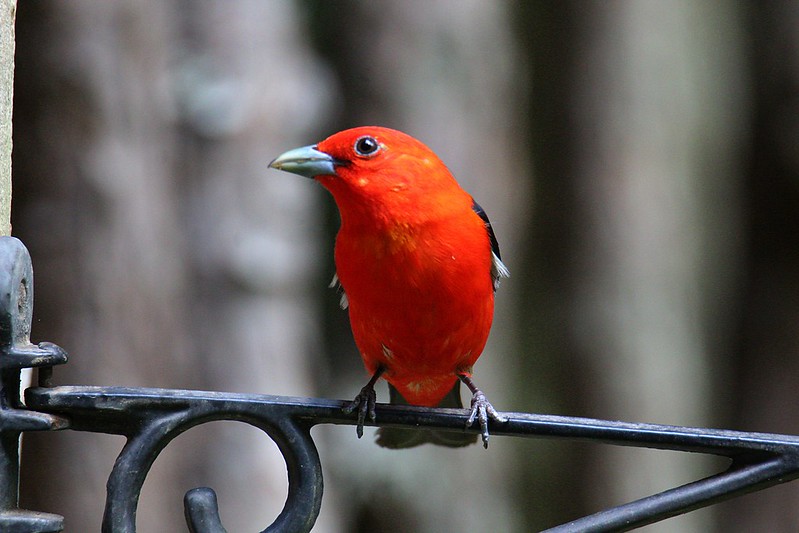
Foraging high in the trees, often hidden from view, these birds dine on insects like beetles, butterflies, moths, grasshoppers, and locusts, often catching many on the wing. They will also sometimes eat fruit and berries.
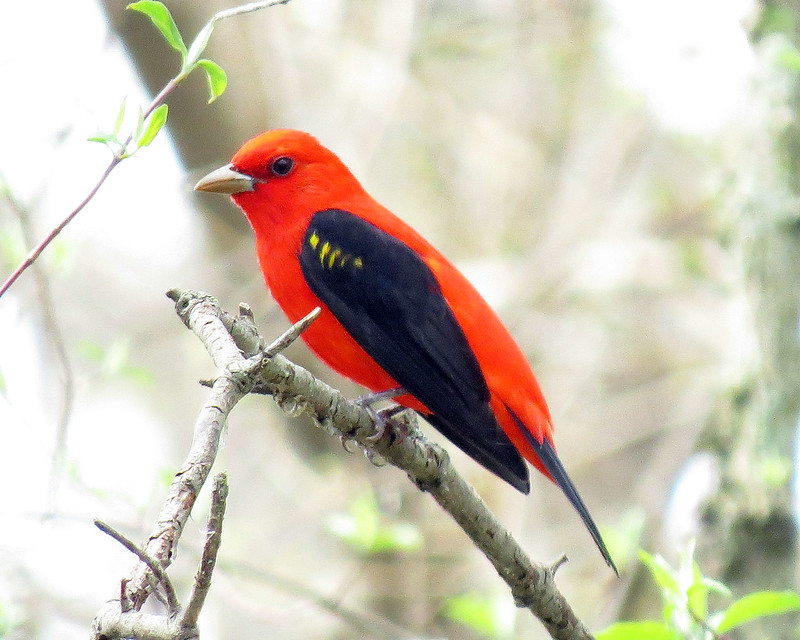
Breeding for Scarlet Tanager occurs from May through to August when the male puts on a display for the female, where she apparently is quite attracted to his red back! She then goes on to build a shallow, saucer-shaped nest in around a week from, twigs, rootlets, coarse grass, and weed stems. Lining the interior with fine grasses and pine needles, the nest is built at a height of 2-25 meters above the ground, the female lays up to 5 eggs within which she incubates for 13-13 days. Once hatched, both parents feed the young and keep the nest clean. The young are able to leave the nest about 9-15 days after they have hatched.
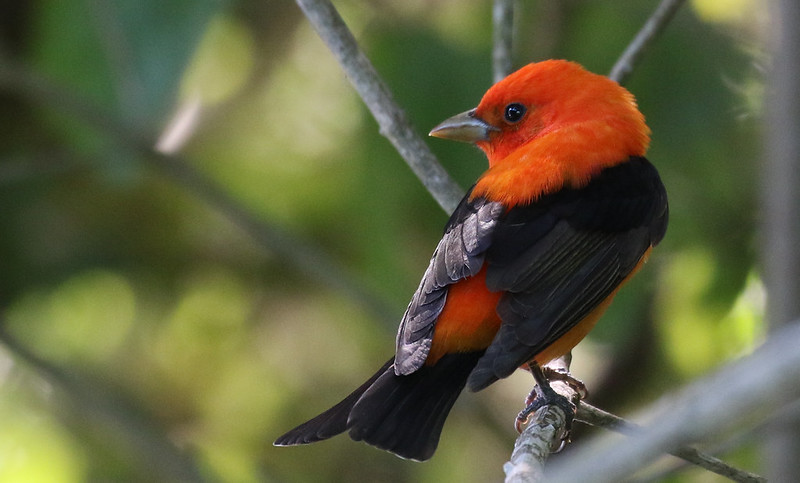
Though in decline in some areas due to habitat fragmentation, and predation, on a global scale Scarlet tanagers are in plentiful numbers. This being the case, the ICUN classifies the Scarlet tanager as of least concern.
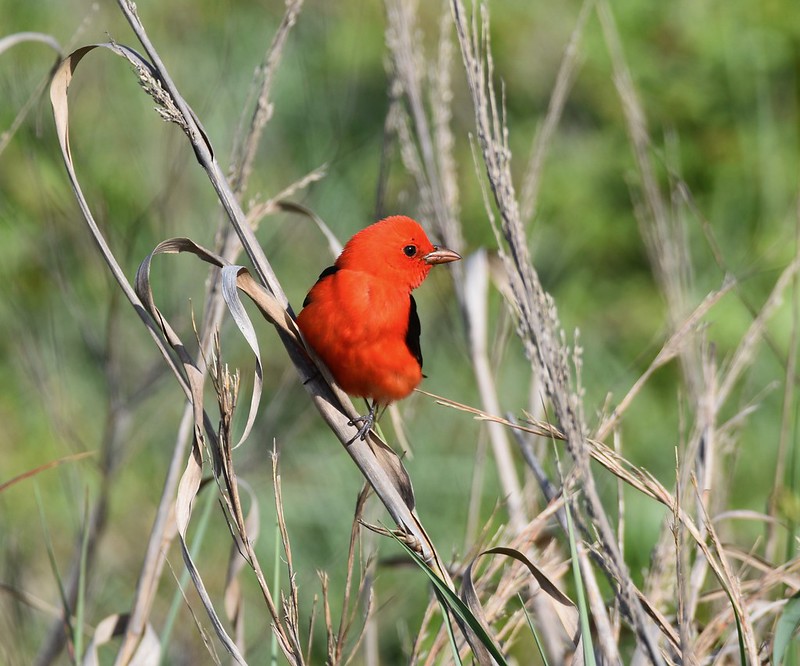
Watch and listen to this bird right here below:
